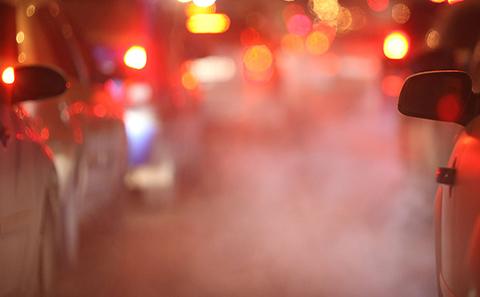Understanding rogue waves
Informing industry and improving safety at sea
Rogue waves are large, unpredictable and suddenly appearing surface waves that can be extremely dangerous. Research led by Southampton PhD student, Alex Cattrell, suggests that these destructive ocean phenomena are occurring less often, but becoming more extreme.
Waves are classed as ‘rogue’ when they are over twice the significant wave height of the background sea state (the average height of the top third of the highest waves). From trough to peak, past observations have put some at over 30 metres high. The fiercest are capable of damaging or sinking ships, can wound or kill crew members and on occasions have swept people off the shoreline and out to sea.
Around the world, rogue waves occur many times each day and are a major issue globally for the shipping industry. Alex and a team of engineers and oceanographers from Southampton, together with researchers from the National Oceanography Centre, examined over 20 years of information (1994–2016) from 15 buoys, which provide surface data along the US western seaboard.
On average, the team found instances of rogue waves (across the two decade window) fell slightly, but that rogue wave size, relative to the background sea, increased by around one per cent year-on-year. They showed rogue waves are more prevalent and of greater severity in the winter months and, intriguingly, are happening with increasing frequency within calmer background seas.
The occurrence of rogue waves is difficult to predict, but simply understanding when and how these rare events occur is extremely important for mariners, both in terms of ship safety and economics.
Rogue waves along the western shoreline of the USA have fatally swept people out to sea at Point Reyes, Maverick’s beach and Arcata, in California and Depoe Bay, in Oregon. In 2000, the US National Oceanic and Atmospheric Administration’s research vessel RV Ballena capsized off Point Conception, California, and in 2006, MV Westwood Pomona encountered a rogue wave off Port of Coos Bay, injuring one person and damaging the vessel.
Research supervisor, Professor Meric Srokosz, adds: “Ports along the west coast of America handle almost half of the country’s container trade and, together with shipping connected to the Californian oil industry, there is a high volume of tanker, cargo, fishing and passenger vessel activity in the region.
“Our research can help inform these industries and suggests that if data on rogue waves is to prove useful, geographical, seasonal and year-on-year variations need to be taken into account.”
Alex and the team hope more work can be done using their research method in other parts of the world, adding to existing research sources, to better understand how, and predict when, these destructive forces may strike.
Related Staff Member
You may also be interested in:

Transforming shipping across the world
Improving efficiency and productivity

Future-proofing our oceans
Conserving ocean spaces and developing the ships and naval vessels of the future

Health impact of air pollution
Influencing government policy on air pollution.